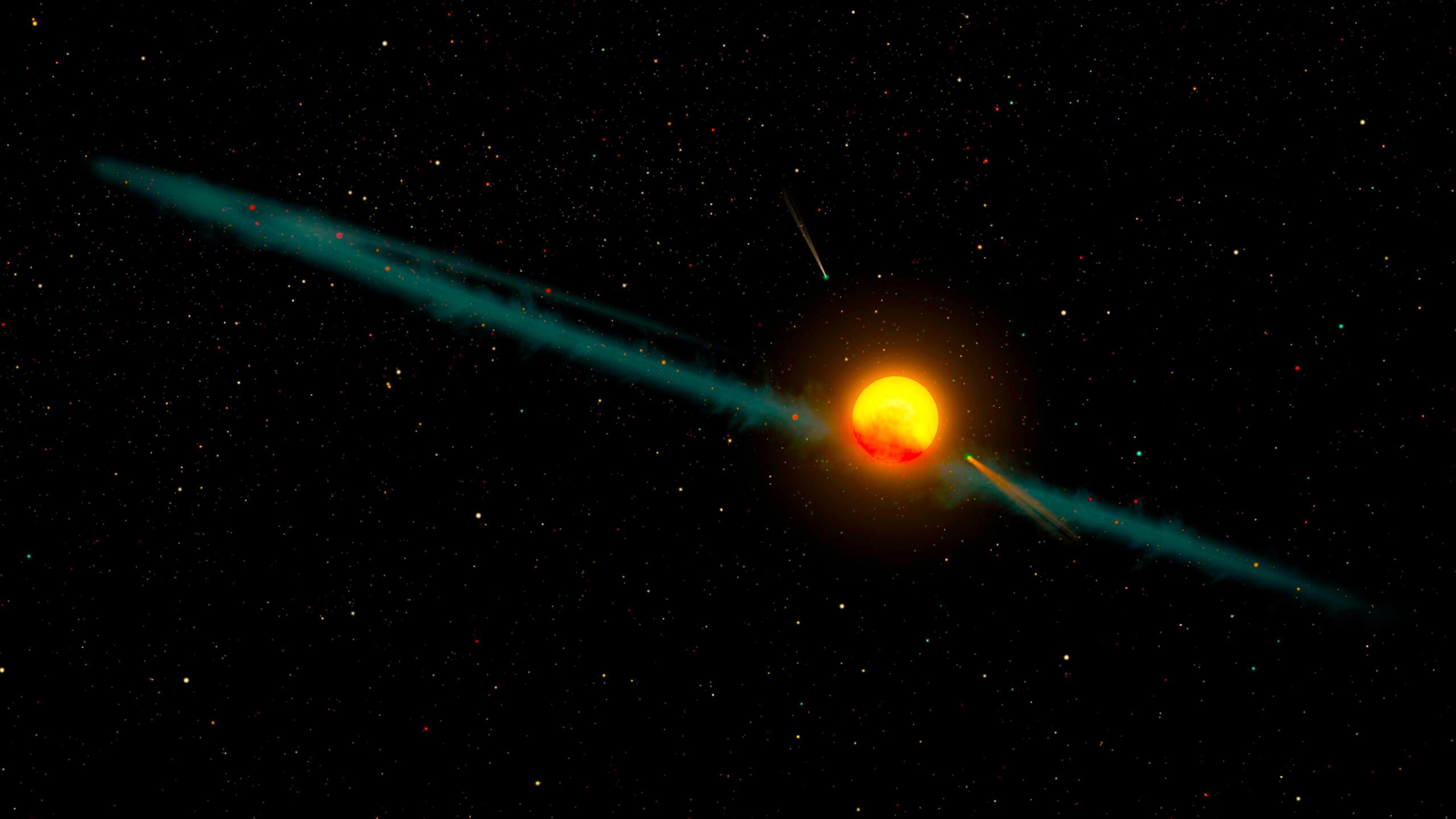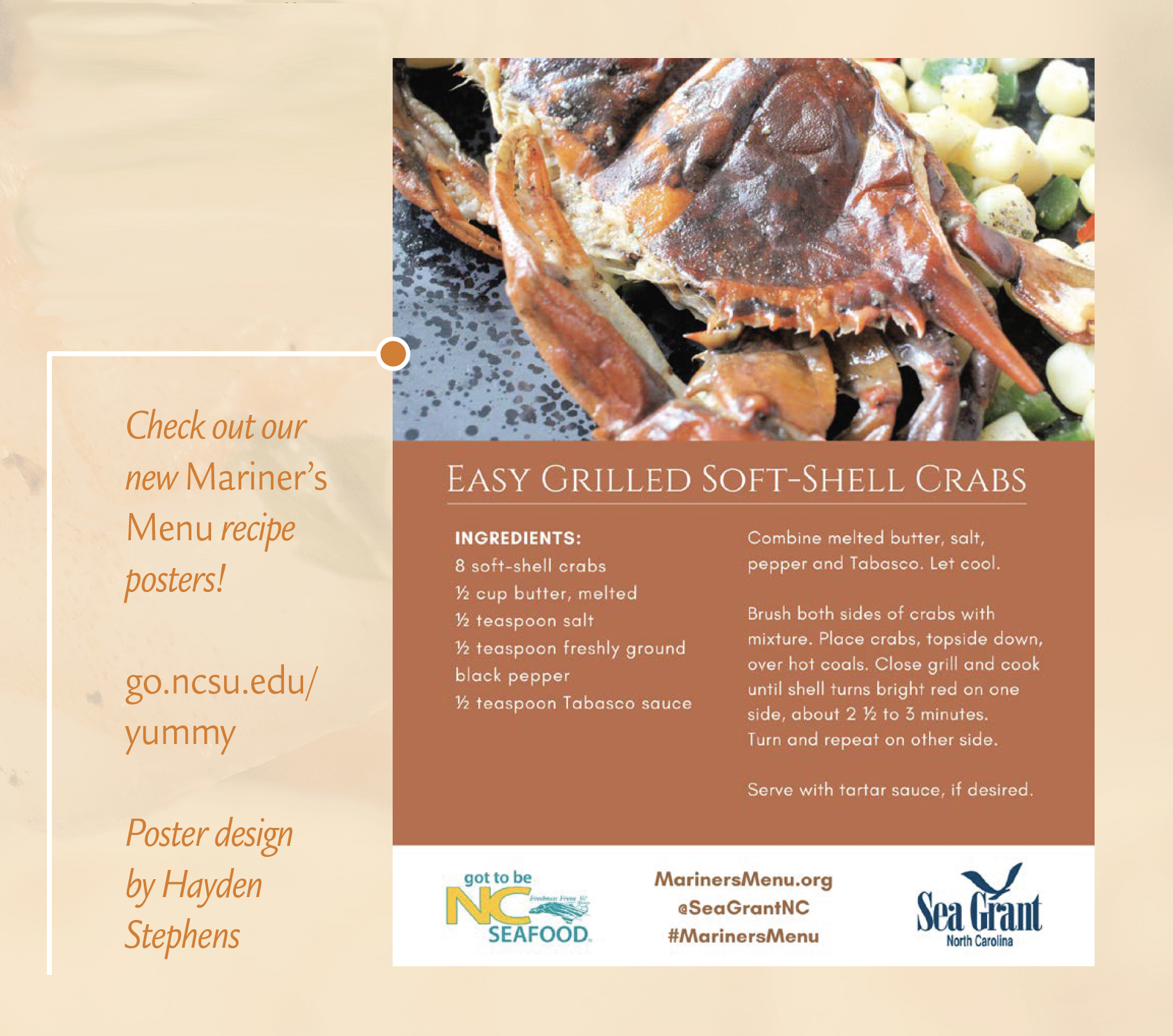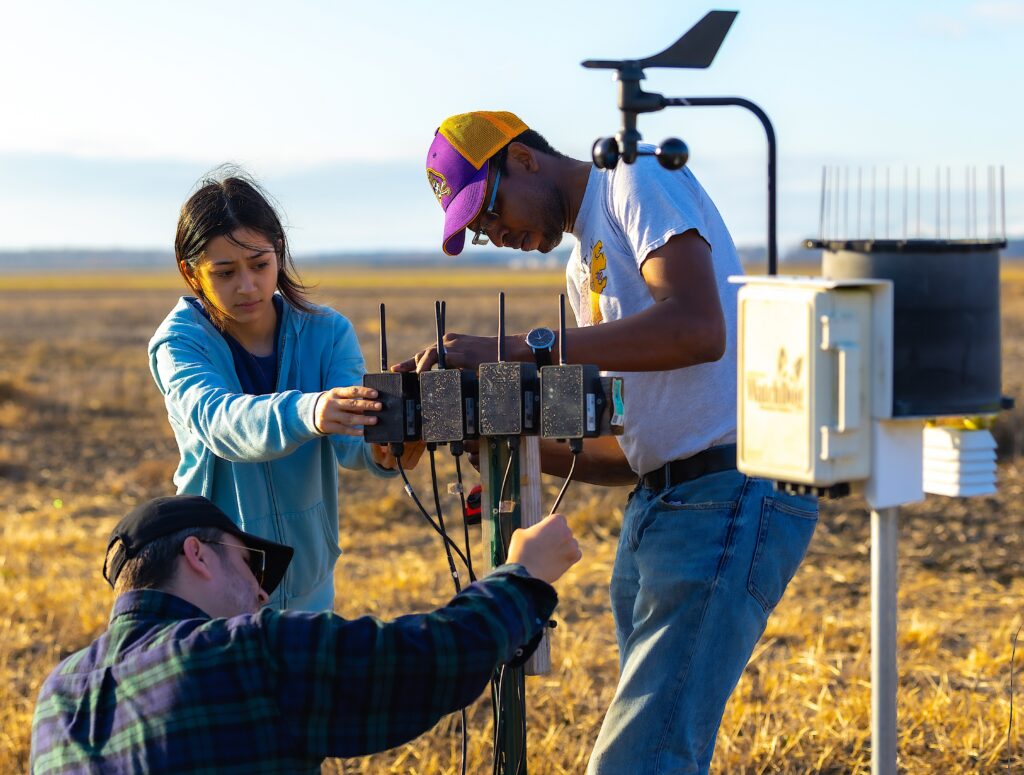
Crop Resilience Project Earns New Funding
With new funding from the National Sea Grant Office, East Carolina University’s Alex Manda will extend his resilience research in eastern North Carolina communities. Manda, a geologist, has been investigating the effects of soil salinization and saltwater intrusion on crop production.
Manda is helping coastal farming communities in Hyde County by providing them with tailored information and guidance to manage risks from saltwater. The project will create a “high salinity alert system” to notify farmers when they need to make shifts or take action.
Manda’s team also will recruit students and community members through NC Cooperative Extension and with other partners to share knowledge during and after the project.
Amid extreme and frequent weather events and risks to the coast, NOAA’s National Sea Grant Office is making investments to enhance engagement, technical assistance, education, and research to address climate and weather impacts in communities across the country. Manda’s project launched last year with a core research award from North Carolina Sea Grant.
More on North Carolina Sea Grant’s resilience efforts
More on funding opportunities
More from Coastwatch on coastal resilience
— Carrie Clower
Sea Grant Loses a Giant
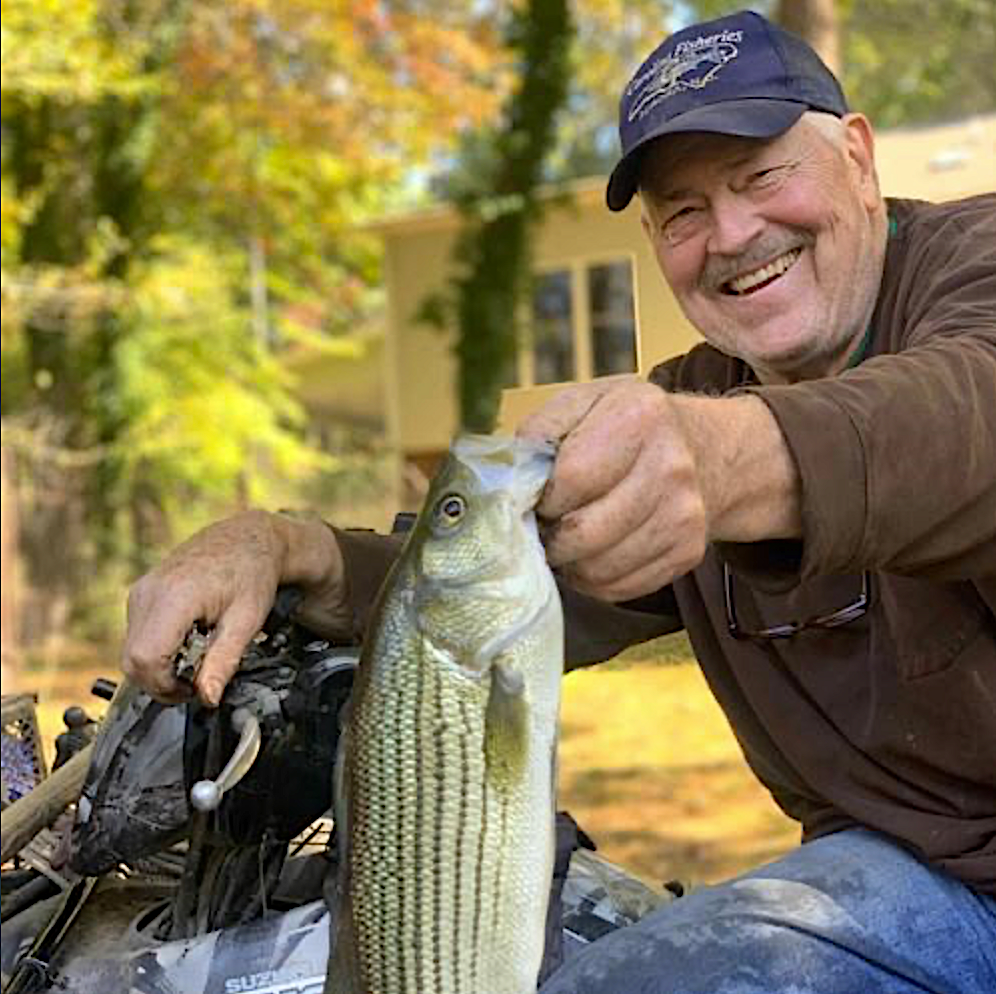
Ron Hodson, a leader in North Carolina’s aquaculture industry, passed away on February 17, 2025. He served North Carolina Sea Grant from 1981 until his retirement in 2006.
Hodson grew up on his family’s farm in Trotwood, Ohio, the start of his lifelong journey in fisheries and aquaculture. He credited his upbringing with his being “a natural” in this field of study, earning a doctorate in fisheries sciences from Texas A&M University.
In 1981, he joined North Carolina Sea Grant as its associate director and became the program’s director in 1998. Hodson’s work expanding the state’s commercial hybrid striped bass aquaculture industry helped transform the seafood market while improving rural economic development.
Following his tenure as program director for nine years, Hodson retired in 2006 from both North Carolina Sea Grant and the Department of Zoology at NC State University, where he was a faculty member. For his years of career achievements and service, Hodson received The Order of the Long Leaf Pine from the Governor of North Carolina, the state’s highest honor.
To his colleagues, he was a hard-working man without any pretenses. “Ron was my first Sea Grant director,” says Katie Mosher, North Carolina Sea Grant’s former communications director. “He taught me not only the value of applied science helping communities, but also strategies for being a good supervisor and mentor.”
Eric Herbst, coastal aquaculture specialist for North Carolina Sea Grant, credits Hodson with igniting his love of the field.
“My first experience witnessing aquaculture extension was Ron coming down to North State Fisheries, a hybrid striped bass farm in Pinetown, North Carolina, and pulling three or four all-nighters in a row helping the farm manager spawn fish. It left a big impression on me,” Herbst says. “I wanted to be like Ron.”
On behalf of North Carolina Sea Grant, we hope his family and friends find comfort and peace in the legacy he has left with us.
Read about Hodson’s life and achievements in his obituary.
Read Coastwatch’s piece on Hodson in honor of his retirement.
In lieu of flowers, the family asks that you consider making a memorial donation in support of the Pamlico Aquaculture Field Lab research activities, about which Ron was so passionate. Your donation would help support students, research, and outreach activities that continue to build on the work Ron began in Aurora many years ago. You can make a donation here.
— Carrie Clower

NC Sea Grant and APNEP Name New Joint Fellow
Madeline Payne, a Ph.D. student in the University of North Carolina at Chapel Hill’s Environment, Ecology, and Energy Program, is the winner of the 2025 joint fellowship from North Carolina Sea Grant and the Albemarle-Pamlico National Estuary Partnership. She will investigate how changing coastal landscapes affect the role of seagrasses in aquatic ecosystems.
“Madeline’s work will fill a knowledge gap about what is going on at the deepwater edge of our subaquatic vegetation habitats,” says John Fear, North Carolina Sea Grant’s deputy director. Payne’s project will use remote sensing and spatial analysis to understand how seagrasses respond to changing environmental conditions.
“By understanding the impacts of inlet widening, hurricanes, and water clarity on seagrasses, this research will be critical for enhancing the resilience of these vital coastal ecosystems,” says Aman Kohli, North Carolina Sea Grant’s research and program coordinator.
North Carolina has the most seagrass of anywhere along the Atlantic coast, according to Tim Ellis, APNEP’s quantitative ecologist. “But this ecologically and economically important estuarine resource is declining,” he says. “Projects like Madeline Payne’s will improve conservation and management strategies.”
Payne currently is North Carolina Sea Grant’s Hook, Line & Science Communication Fellow.
More on the NC Sea Grant/ANEP fellowship
— Carrie Clower
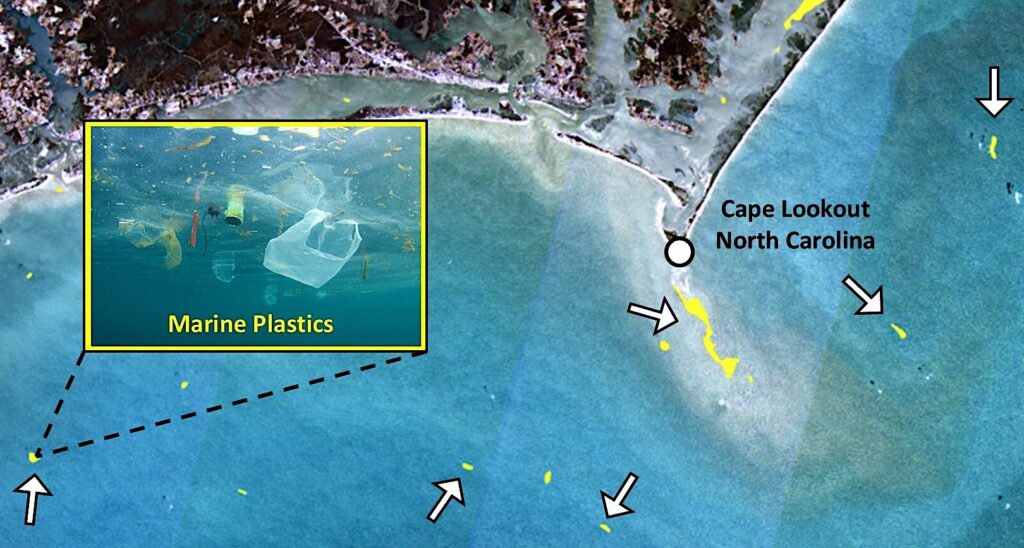
New Project Tracks Marine Debris
Fathom Science and North Carolina Sea Grant are collaborating to address the increase of marine debris and plastic pollution. The NOAA-funded project will employ cutting-edge ocean modeling, satellite imaging, and machine learning to track and mitigate marine debris.
“We’re excited to bring new technological solutions to a critical environmental issue,” says Fathom Science’s Naz Chaichitehrani. “By integrating satellite data and advanced ocean modeling, we will be able to predict the movement of marine debris, offering real-time solutions that can be scaled globally.”
By providing data on the locations of marine debris, the initiative will enable faster and more efficient cleanup. Fathom Science’s expertise in remote sensing and ocean prediction will dovetail with North Carolina Sea Grant’s community engagement and educational outreach.
“This partnership highlights the power of collaboration between science and community engagement,” says Susan White, executive director of North Carolina Sea Grant. “By combining our resources and knowledge, we will not only improve marine health but also raise awareness and involve local communities in addressing this global challenge.”
The project also will develop an online public dashboard of marine debris locations, forecasting debris movements and enabling communities to participate in debris removal.
More from Fathom Science
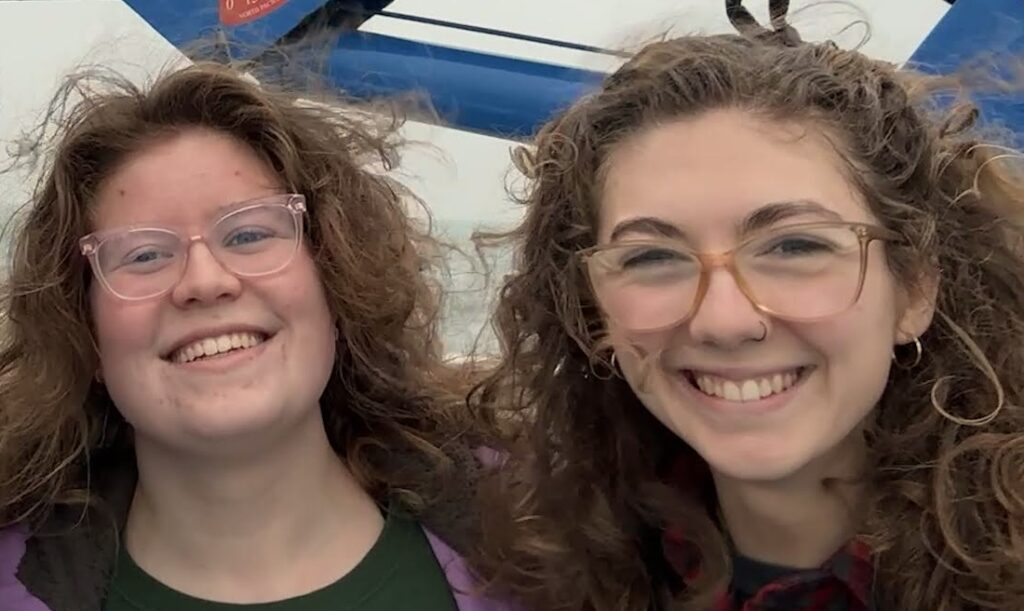
UNCW Students Win Coastal Resilience Team Competition
Students from the University of North Carolina Wilmington are winners of North Carolina Sea Grant’s Resilience Team Competition funding. The award provides up to $20,000 to conduct a two-year project that will lead to more resilient habitats and communities on North Carolina’s coastal plain.
Master’s student Céilidh Christie and undergraduate Mazzy Morrison, under the direction of Lori Sutter and Bradley Tolar, will investigate the consequences of tidal freshwater forest wetlands becoming ghost forests along the Cape Fear River. All four represent UNCW’s Department of Biology and Marine Biology, and both students are part of Tolar’s Lab.
“Wetlands serve many essential ecosystem services, including carbon sequestration and storage,” says Christie. “The accumulation of carbon is a key feature of their resilience, because it allows the marsh to adjust its elevation relative to local water levels.”
John Fear, North Carolina Sea Grant’s deputy director, says changes in coastal ecosystems have implications for resilience. “Understanding how our coastal systems are responding to various forces is critical to creating practical solutions and ensuring the best management options are utilized,” Fear adds.
The project also will raise awareness through UNCW’s MarineQuest K-12 educational program, as well as with potential content for the NC Aquarium at Fort Fisher.
More on the Coastal Resilience Team Competition
— Carrie Clower
- Categories:

